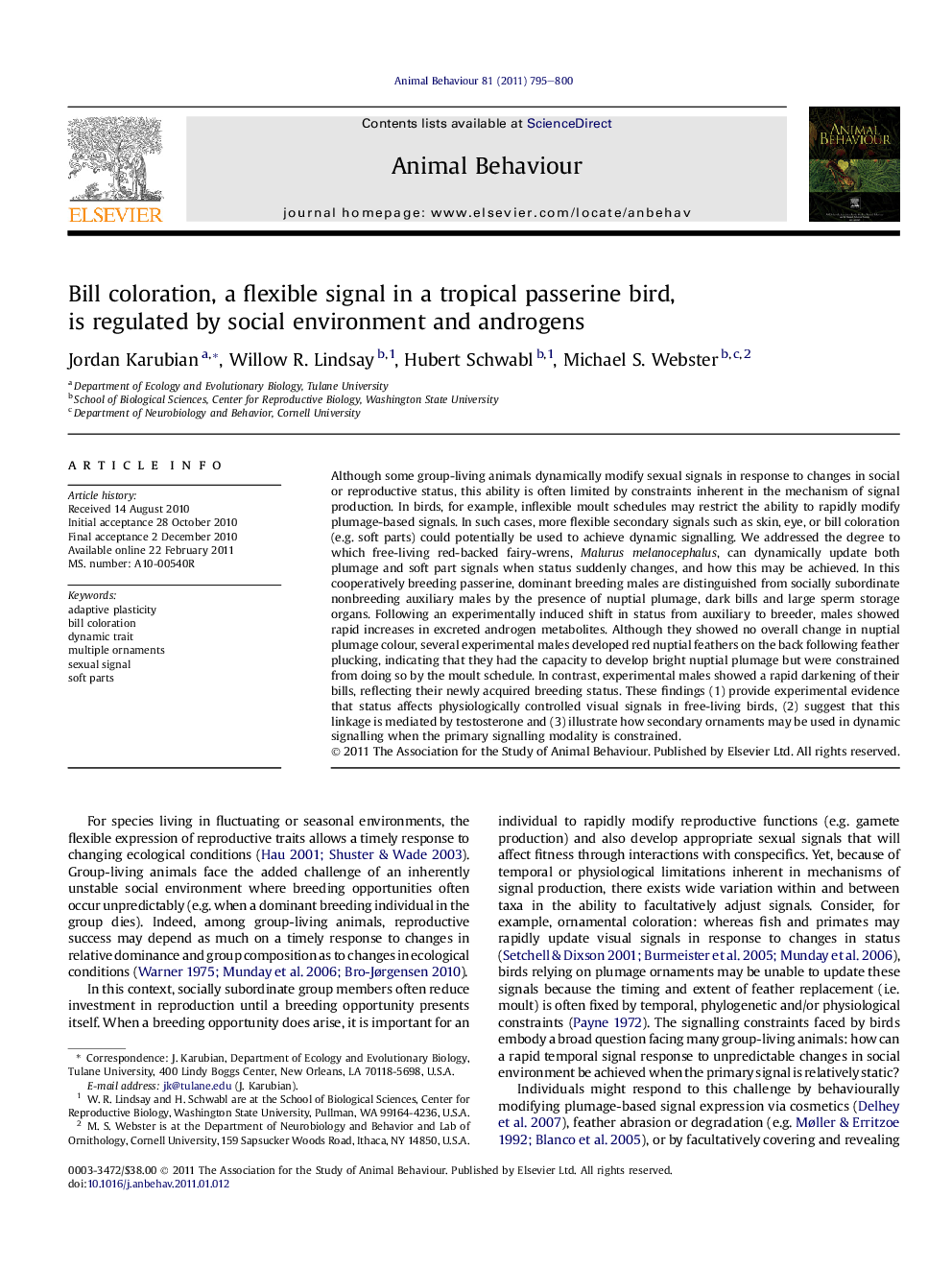| Article ID | Journal | Published Year | Pages | File Type |
|---|---|---|---|---|
| 2417088 | Animal Behaviour | 2011 | 6 Pages |
Although some group-living animals dynamically modify sexual signals in response to changes in social or reproductive status, this ability is often limited by constraints inherent in the mechanism of signal production. In birds, for example, inflexible moult schedules may restrict the ability to rapidly modify plumage-based signals. In such cases, more flexible secondary signals such as skin, eye, or bill coloration (e.g. soft parts) could potentially be used to achieve dynamic signalling. We addressed the degree to which free-living red-backed fairy-wrens, Malurus melanocephalus, can dynamically update both plumage and soft part signals when status suddenly changes, and how this may be achieved. In this cooperatively breeding passerine, dominant breeding males are distinguished from socially subordinate nonbreeding auxiliary males by the presence of nuptial plumage, dark bills and large sperm storage organs. Following an experimentally induced shift in status from auxiliary to breeder, males showed rapid increases in excreted androgen metabolites. Although they showed no overall change in nuptial plumage colour, several experimental males developed red nuptial feathers on the back following feather plucking, indicating that they had the capacity to develop bright nuptial plumage but were constrained from doing so by the moult schedule. In contrast, experimental males showed a rapid darkening of their bills, reflecting their newly acquired breeding status. These findings (1) provide experimental evidence that status affects physiologically controlled visual signals in free-living birds, (2) suggest that this linkage is mediated by testosterone and (3) illustrate how secondary ornaments may be used in dynamic signalling when the primary signalling modality is constrained.
